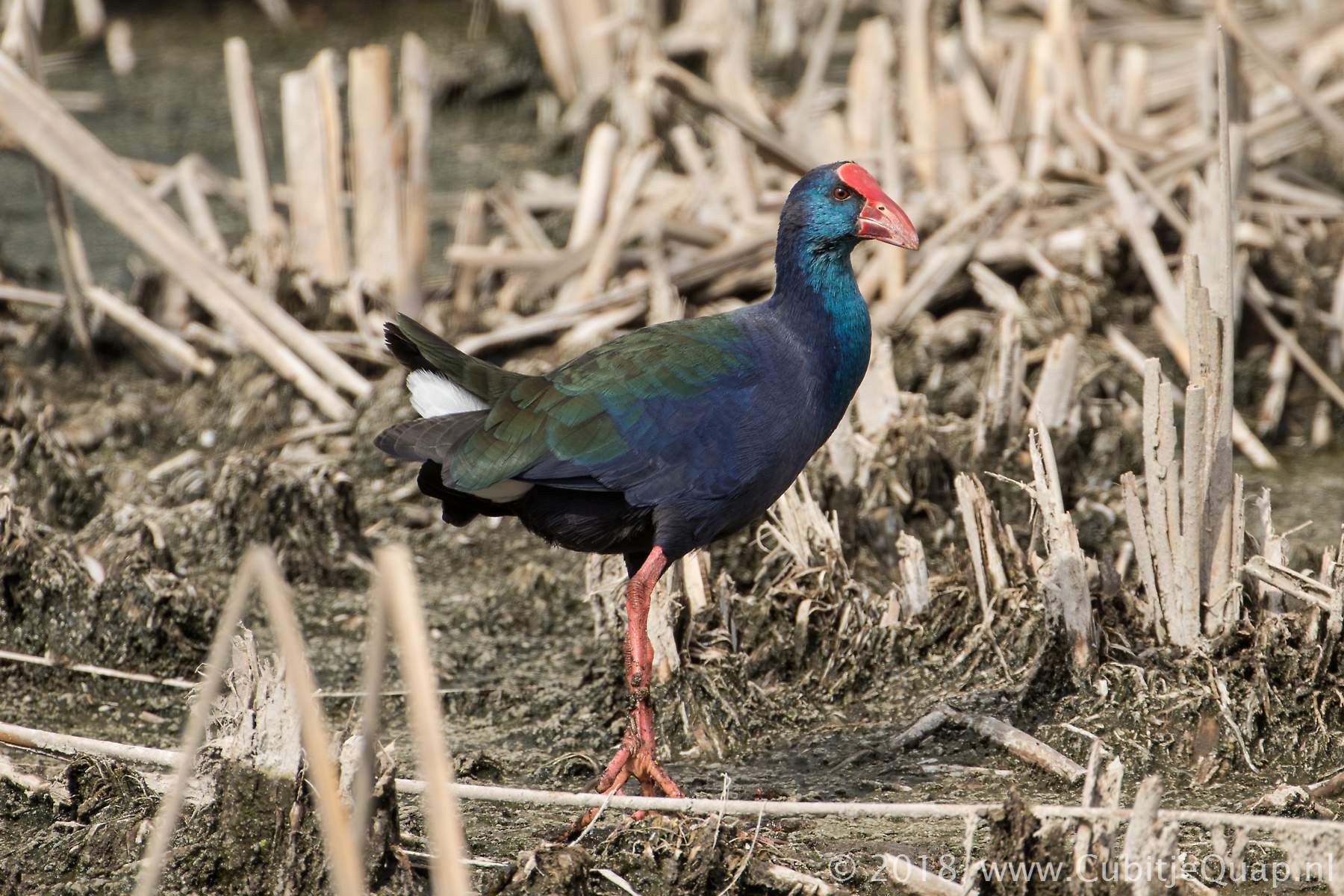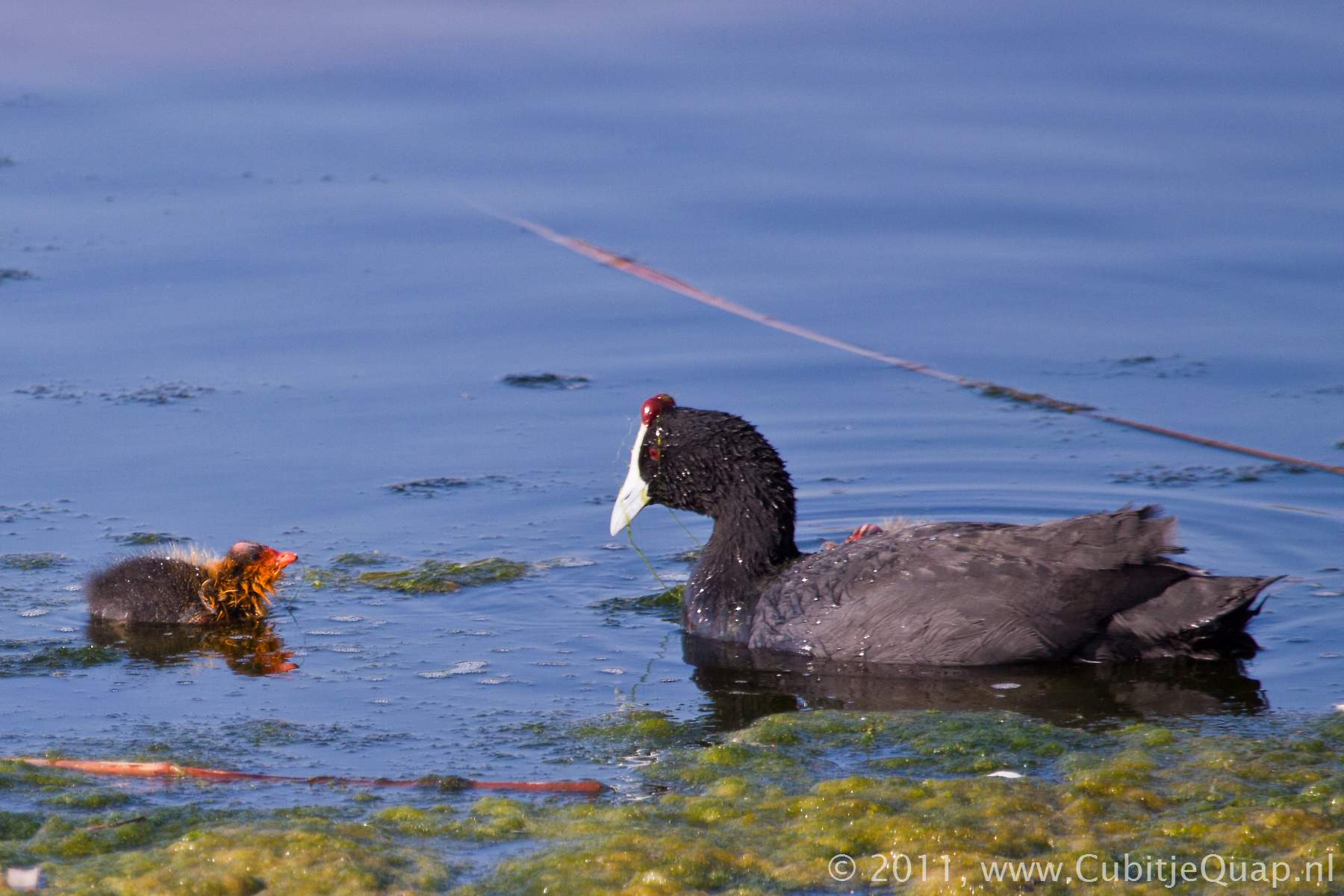Swamphens, gallinules and coots Information page
Description
Medium-sized, robust, short- and long-legged, waterbirds.They mainy eat plant material, but they will also take small animals and carrion when the opportunity arises.
They are monogamous, placing bowl-shaped nests in dense vegetation or in floating mound of vegetation, usually conspicuously placed on open water. Clutches of 4 - 5 whitish or buffy eggs spotted and blotched with reds, browns and greys. Incubation and care of young by both sexes, sometimes supported by helpers.
Scientific names
Fulica = soot (probably coot is derived from this)Porphyrio = purple
Gallinules and swamphens
Medium to large wading birds with predominantly green, blue and purple plumage. Their short and heavy bills are adapted for biting through tough vegetation. They have a colourfuk frontal shield from the bill up the forehead and brighly coloured bill and legs. The toes are elongated for clambering up reeds, for holding stalks while feeding and for walking on floating vegetation.They favour water surrounded by reeds.
They are mainly vegetarian, but they will also take small animals and carrion.
These birds are monogamous and extremely territorial when breeding. They nest just above the water in dense vegetation, some of which is pulled down over the nest to aid with concealment. Small ramps to the water provide access to the nest. When threatened, the adults will run and may dive, while the chicks submerge with only the culmen and the nostrils exposed (like a jacana).
Coots
The red-knobbed coot is the only coot-species in southern Africa. It gets its name from the paired fleshy knob-like projections on top of the head. These knobs are a;ways visible, but swell considerably in both sexes during the mating season. The legs are long and the flesh of the toes is flattenend into broad lobes increasing the surface area of the feet. They can beused for propulsion during swimming, similar to webbing in other waterbirds. They moult all their flight feathers simultaneously and are unable to fly for almost two months.Their main diet is plant material, but they also take various bits of animal matter and even carrion. They dive for aquatic vegetation and seeds, but they will also walk and forage, being especially partial to grazing green grasses. They also swim and surface-glean, but they prefer to dive.
They are know to opportunistically feed in the wake of diving white-backed ducks.
As a habitat they favour wetlands with emergent vegetation. They breed opportunitistically at any time of the year. The nest is built by both sexes and is usually a floating moundof rank plant material that has a ramp for easy access. Flase nests are also built, possibly to confuse predators.
Interesting links
Wikipediafatbirder.com


